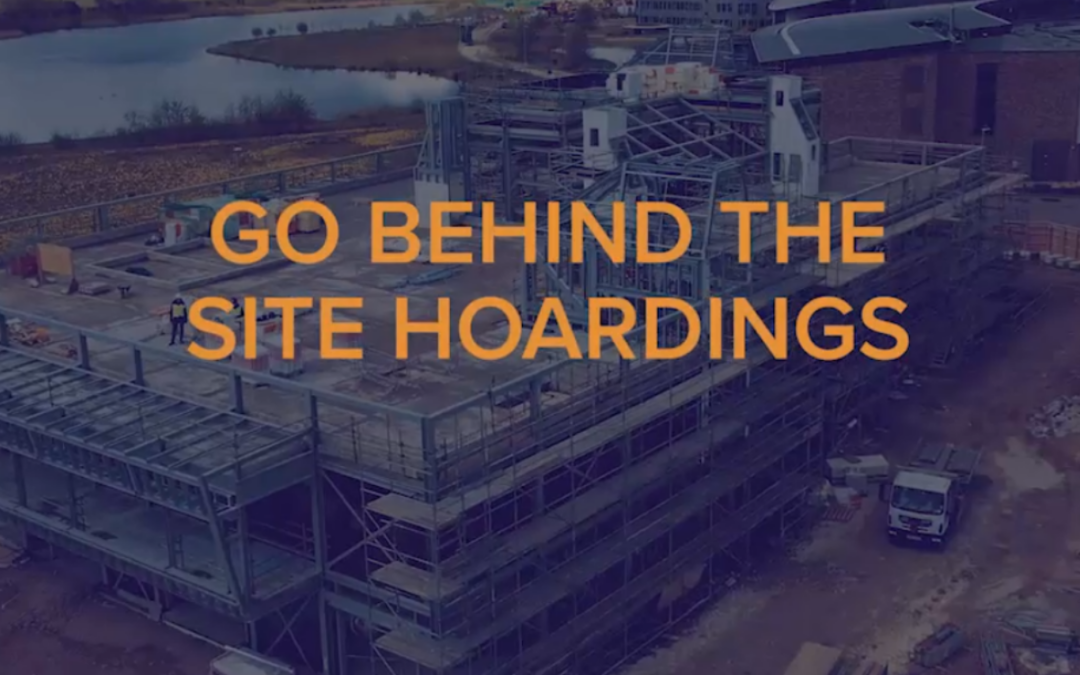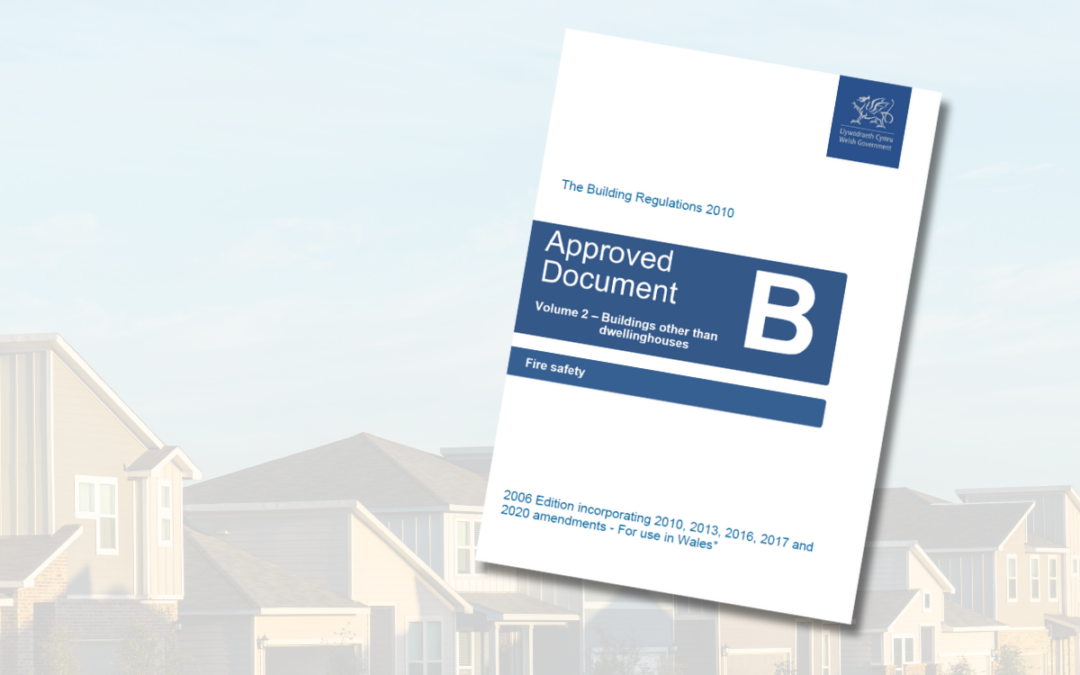
by Clair Mooney | 26 Jan, 2024 | Awards, Main News Feed
FIS has announced the shortlist for its 2024 Innovation Awards. The awards aim to shine a light on innovation, debunking the myth that our sector is not innovative. The Awards comprise four categories, Digital, Sustainability, Product-Fit Out and Product – FF&E. A judging panel was set up for each category, who indpenedetly assesed all entries.
Digital
- PlanRadar
- Zentia for Sonify 3D Studio
- Etex for MySiniat
Sustainability
- IOBAC UK for its contamination-free flooring installation tabs
- Optima for its Glass Partitions manufactured with Hydro CIRCAL aluminium
- Selo for TEMPUS – temporary fire doors
Product – Fit Out
- Fire Stop Products for Speed Cutter
- Global Ceilings Services for Teg Clip
- Seamless Abutment Solutions for Cross Stud
Product – FF&E
- Box Strap
- Mute for OmniRoom
- Eyevolution for Shadowline
Congratulations to those who made the shortlist, and thank you to everyone who entered. We will be announcing the winners at the FIS Awards Ceremony on 27 February in London. Reserve your place here.

by Clair Mooney | 15 Jan, 2024 | Main News Feed, Skills
FIS is encouraging its members to get involved in this year’s Open Doors event which allows young people and career changers to visit construction sites and workplaces across Great Britain from Monday 18 – Saturday 23 March. This is our chance to showcase the range of career opportunities available in our sector.
Open Doors, delivered by Build UK of which FIS is a member, offers a unique insight into what it is like to work in construction by taking visitors behind the scenes to showcase the diverse range of opportunities available in the industry.
Construction needs to recruit almost 45,000 new entrants each year, and Open Doors aims to show that the industry offers exciting and rewarding careers for everyone – whatever their age, background or skills.
Schools and colleges can book group visits for their students to discover first-hand what the industry has to offer, including a wide range of apprenticeships. New events will continue to be added over the coming weeks, so keep an eye on the Open Doors website for events taking place in your local area.
Visitors can book their place now at more than 150 events already registered across England, Scotland and Wales. From high profile projects – including One Leadenhall in London, the new Aquatics Centre in Manchester, and the Paisley Museum in Scotland – to manufacturing facilities, offices and training centres, Open Doors enables visitors to see the industry in action and learn more about the 180 careers available.
Julie White, Chair of Build UK, said:
“I am passionate about making the world of construction open and accessible to as many young people as possible, so they can see all the different career opportunities there are in our industry. Open Doors is a fantastic way to find out more about the amazing things we build and what the industry has to offer, so book your visit today to see where a career in construction could take you.”
Michael Oppong, Management Trainee Quantity Surveyor at Willmott Dixon who attended an Open Doors visit in 2015, added:
“Open Doors definitely sparked my interest in a career in the construction industry. I have since taken the degree-level apprenticeship route, combining on-the-job training with university studies. I would encourage everyone to attend an Open Doors visit and consider a career in the industry – just like me!”

by Clair Mooney | 11 Jan, 2024 | Skills
FIS is continuing its work with No Going Back, an initiative to support prison leavers, and an opportunity has come up to visit HMP Brixton.
The visit will take place on Thursday 25 January from 9am and we are looking for members to join us to explain the pathways into the sector and how they can build a lasting career.
The individuals attending this event are within their release window and have an interest in drylining and construction, as well as those actively enrolled in the drylining workshop.
Instructors at HMP Brixton will provide details on the training individuals have undertaken during their sentence. Additionally, No Going Back and Employers can deliver an overall presentation (a talk on the company and pathways to roles in the industry) and men could showcase different drylining tasks.
There will then be dedicated time for one-on-one sessions between employers and the prison leavers.
If you can support this event, email beenanana@thefis.org by Tuesday 16 January as the prison will then be able to promote the event.

by Clair Mooney | 11 Jan, 2024 | Technical
FIS has responded on behalf of, and in conjunction with the views of it’s members to a consultation from the Welsh Government regarding changes to Approved Document B this week. The proposed changes were broadly similar to the changes that we saw to ADB in England at the end of 2022, but also encapsulated the consultation on the removal of National classifications for Fire Resistance and Reaction to Fire from ADB.
We re-asserted our position strongly highlighting the downsides of removing national classifications for fire resistance without provisions around the gaps that exist in the EN testing regime and a sensible timeframe, that is consistent with our previous position paper from the English consultation last year (https://www.thefis.org/wp-content/uploads/2023/03/FIS-Position-paper-on-Omitting-National-standards-from-ADB-March-2023.pdf). Our response to other issues such as the ban on use of combustible materials in and on external walls of buildings and other areas where more clarity is required were consistent with the English changes seen at the end of 2022 and the views of our colleagues at the Construction Products Association.
If you would like to see the full text of our response, please contact jamesparlour@thefis.org

by Clair Mooney | 10 Jan, 2024 | Main News Feed
The government has published guidance setting out how holiday pay should be calculated for part-year and irregular hours works, as well as other 2024 holiday pay changes. The guidance advises how employers should apply the recent changes to the holiday pay provisions of the Working Time Regulations.
It sets out:
- changes relating to the amount of leave that can be carried over, removing the regulations that allowed workers to carry over leave that could not have been taken because of the Covid-19 pandemic.
- how statutory holiday entitlement is accrued and calculated
- what calculations an employer should do if an employee leaves a job part-way through a leave year, to check they have received the statutory minimum or if a payment in lieu is necessary
- definitions for an irregular hours worker and part-year worker and provides examples for each
- how statutory entitlement is accrued by part-year or irregular hours workers while they are on maternity or other family-related leave, or off sick
- how employers should calculate rolled-up holiday pay
FIS Associate Service Provider Member Citation has produced a simple free guide to everything you need to know about managing annual leave, updated with the latest rules which can be downloaded here.
What’s inside?
- The latest employment law changes
- Holiday entitlement and pay
- Carrying over and accruing holiday
- Rolled-up holiday pay

by Clair Mooney | 10 Jan, 2024 | Main News Feed
FIS and The Get It Right Initiative (GIRI) have announced an exciting new collaboration to help reduce error and increase productivity in the finishes and interiors sector.
FIS and GIRI have worked closely together in recent years. This new agreement formalises this arrangement and will support both organisations to develop their work through the supply chains, share best practice ideas between different parts of the construction sector and ultimately drive transformational improvement in tackling errors and increasing productivity.
The core objectives of this reciprocal membership deal are:
- Improving knowledge exchange and highlighting best practice guidance to help inspire and inform change
- Supporting training that underpins competence and improves productivity
- Collaborating to understand and eliminate mechanisms for error
- Informing design and encouraging better process management
FIS CEO Iain McIlwee said:
“Collaboration, breaking out of silos and challenging the status quo are essential to delivering the change. Giri have always provided a platform to do this, from the initial research into the cost of error through to the amazing training that they have developed. The work they are doing around error and retention is potentially groundbreaking and we are keen to throw our weight in and support this work, share and test our key resources and learnings with Giri and to plug our members draw in to this amazing network.”
Cliff Smith, GIRI’s Executive Director said:
“Collaboration is key to change. FIS are a leading sector body with a wealth of deep sector-based knowledge and some excellent guidance available. The potential is huge. FIS share our values about the need for collective research and better collaboration to support data-led change. This combined with their ability to draw together companies from across the supply chain will link well with the systemic and wider sector focus that GIRI brings to help deliver our shared ambition for positive transformation.”
Areas of focus will include supporting the work that GIRI is leading with Cranfield University and the Construction Leadership Council around establishing an Error Frequency Rate that can be used in efforts to eliminate the need for retentions. Critical to success is gathering anonymous data to tackle the root causes of our defects ‘culture’. This is something FIS will be following up through Working Groups, but members keen to get involved at the early stages should contact cliff.smith@getitright.uk.com.
An early opportunity for FIS members to learn more about the work of GIRI is the GIRI Members’ Meeting due to take place at the Institute of Civil Engineers in London on the morning of 14 February. FIS has a number of guest tickets to distribute to FIS members for this meeting. Members interested in attending should email greggreves@thefis.org
For further information or for any questions please contact the FIS at info@thefis.org or call 0121 707 0077.

by Clair Mooney | 4 Jan, 2024 | Main News Feed
HSE has guidance on protecting workers in low temperatures during the winter, particularly those working outdoors.
It includes an overview of the legal duties for employers, together with a checklist for performing a basic risk assessment. There is also specific guidance on avoiding slips and trips which are more common in winter.
For employment support and guidance, take a look at the FIS Employment Toolkit.

by Clair Mooney | 4 Jan, 2024 | CSCS
Following the successful rollout of CSCS Smart Check, which enables cards across all 38 card schemes carrying the CSCS logo to be verified using the same platform, CSCS has announced that its previous app ‐ ‘Go Smart’ ‐ will be turned off on 31 March 2024. CSCS Smart Check incorporates API technology allowing it to be installed directly into site access systems, which can help to improve site safety and tackle card fraud. Any members still using Go Smart should put in place plans now to move across to CSCS Smart Check as soon as possible, as cards will not be able to be checked using Go Smart after 31 March.
Build UK’s How to be a Smart Site guide explains how to check cards using CSCS Smart Check and make sure everyone has the right card for the job they are doing on site. Members are reminded that CSCS does not issue cards for non‐construction related occupations, and it is the responsibility of the site manager to induct and escort non‐construction workers arriving on site without a card so that they can carry out their work safely.

by Clair Mooney | 4 Jan, 2024 | Skills, Sustainability
The Supply Chain Sustainability School and FIS have collaborated to bring you a range of workshops and webinars specific to the finishes and interiors sector. We’ve highlighted below all the upcoming sessions and relevant resources.
Introduction to Modern Slavery with Willmott Dixon
Tuesday 16 January 2024, 10 – 11am
This webinar will introduce you to the topic of modern slavery featuring insights from Willmott Dixon.
REGISTER HERE
Using Lean for Continuous Improvement and Problem Solving
Tuesday 23 January, 10am – 12pm
REGISTER HERE
Net Zero, SBTs and Carbon Offsetting
Thursday 1 February, 10 – 11am
REGISTER HERE
Introduction to Circular Economy
Thursday 15 February, 12 – 1pm
REGISTER HERE
Embedding Sustainable Procurement
Wednesday 21 February, 9:30 – 11:30am
REGISTER HERE

by Clair Mooney | 19 Dec, 2023 | Contractual and Legal, Main News Feed
As we get to the end of 2023 there is no doubt it has been a tumultuous year for the industry in the United Kingdom. We have experienced some significant business failures which regrettably have left a mountain of debt due to a wide range of subcontractors across the industry. Fortunately, so far at any rate in Scotland, we appear to have avoided the impact of businesses stalling and going into administration and fingers crossed during 2024 that we do not experience any casualties.
The results of the recent CICV Payment and Cash Flow Survey made grim reading, but the responses really were not surprising as many of us who advise contractors and subcontractors, felt that recently reflected what the supply chain was experiencing across Scotland this being a general slowdown in payment periods, and a reduction in the amounts that the supply chain were due. Anecdotally, some clients say that they are currently experiencing a downturn in work opportunities, coupled with a tightening of margins and there are now definite concerns emerging regarding pipeline of work in 2024.
I have set out some positives with the hope that we will see some of these issues been delivered to see a general improvement in the construction industry in Scotland. In 2024 the process of educating the industry on the Best Practice Guide which sets out some of quite simple recommendations to contractors and subcontractors to improve the way in which they manage the commercial aspects of the construction projects. Getting contractors to buy into this is especially important and in embedding these recommendations into their businesses, and already there are several pilot workshops been planned and the feedback will hopefully be positive that lessons are being learned from the solid advice that has been provided. In addition, several contractors are seeking to have internal workshops to bring their commercial and contract management teams up to speed on the SBCC Forms of Contract.
The Quality Initiative is also a great idea and I know that CICV will be supporting this and again this initiative needs to be brought in at site level to ensure that less and less projects have issues concerning non-compliant workmanship which inevitably results in the costs associated with rework and contra charges, from the contractor and the clients. It really is up to everyone reading this article who runs a construction business, to make sure that their focus is on quality, and to end the criticisms experienced by the industry because of non-compliant workmanship and defects.
There is no doubt that there is a surge towards more collaboration in the industry and as to what form that takes remains to be seen, but it strikes me from sitting on the fence that the industry does want to collaborate more closely with the employers, contractors, and the supply chain to improve performance on construction projects. This is going to be a never-ending and a long term process and needs energy and dedication to drive these changes through.
Much work is happening behind-the-scenes on the Construction Accord and in my personal opinion it is essential that the Scottish Government and the construction organisations work very closely together to achieve the objectives of the Accord, and there is no doubt that this is going to take a number of years to come to fruition, but the positive side of this is that discussions are underway and some very positive ideas and objectives are emerging.
Again, on a positive note the Conflict Avoidance Process and the Conflict Avoidance Pledge are gaining traction and we are now seeing a number of major projects having CAP incorporated into the building and engineering projects from the outset. In addition, the level of approaches to the RICS are increasing, to have 1/3 party brought in to try to resolve issues at the initial stages and avoid issues escalating into expensive and time-consuming disputes. The Conflict Avoidance Coalition will come forward in 2024 with a new structure which will focus on promotion and growth, and developing guidelines and processes, and a major conference will be held in 2025 which hopefully will attract major clients users of the construction industry and consultants, contractors, and subcontractors.
I have also been encouraged by the work of the Finishes and Interiors Sector who have appointed experienced individuals to provide Contract Reviews to FIS members. This means that when a tender enquiry comes in a tenderer can have the conditions of contract reviewed to identify any high risk clauses that might require financial recognition but hopefully the parties can negotiate out some of the unacceptable risk transfer amendments and thus start the project with a balanced and fair set of conditions of contract. It is beyond my comprehension why public and private sector clients continue to have pages of amendments to the Standard Forms and the industry needs to stand up to this type of conduct.
One question I was asked recently was – are attitudes changing and so the answer to that is yes. In my own work with a number of clients I have noted that they are walking away from employers who are only interested in lowest price, they are walking away from employers who as I say produce ridiculous amendments to the Standard Forms and there are walking away from both public and private sector clients who are either late payers, or who continually reduce the amounts due to contractors and the supply chain. I find that approach to be refreshing and hopefully it will spread throughout the industry.
So, let us take a positive view moving into 2024 and let us hope that the industry can take on some of the many recommendations coming forward, to make the industry in the United Kingdom a positive and profitable sector to be in.
Read all of Len’s blogs and get more information about all the Business and Legal Support available through the FIS here.

by Clair Mooney | 5 Dec, 2023 | Main News Feed
Leading contractors, developers and housebuilders have stepped up to support the Code for Construction Product Information (CCPI) and signed a pledge to work with their strategic suppliers and manufacturers to drive CCPI conformance and raise standards in the industry.
Barratt Developments PLC, Berkeley Homes PLC, Mace Group, Morgan Sindall Group, Murphy, Persimmon Homes and Skanska UK, are the first companies to step up and become CCPI Demand-Side Supporters.
In becoming a CCPI Supporter, these companies are committing to supporting the CCPI and requiring their strategic suppliers and manufacturers of construction products in their supply chain to ensure that those products are either verified by the CCPI or undergoing the CCPI verification process.
The pledge includes a focus that CCPI conformance will be delivered as soon as possible and has a timebound commitment for delivery by December 2026 at the latest. To this end and wherever possible, CCPI Supporters are committed to introducing this commitment into supply agreements as a preference and prioritising working with strategic suppliers and manufacturers who prioritise delivery of CCPI verification and conformance.
The announcement has been positively welcomed by key industry organisations wishing to support this critical effort to raise standards in the industry including the Builders Merchants Federation (BMF), the Construction Leadership Council (CLC) and the Construction Products Association (CPA – which is also the organisation credited as the founder of the CCPI).
Dame Judith Hackitt, author of the Building a Safer Future Review and Chair of the Industry Safety Steering Group said,
‘It is great to see demand side companies take this lead and setting expectations for the supply chains. This is exactly what we need to see to drive the take up of CCPI’.
From the National Construction Products regulator, Duncan Johnson Deputy Director Construction Products said, “This is a very welcome initiative and an important step forward in constructing better, safer buildings.”
Amanda Long, Chief Executive of CPI Ltd, the not-for-profit organisation set-up to independently verify CCPI conformance said,
‘I warmly congratulate the first CCPI Supporters on their leadership and strongly encourage others to join them. CCPI Supporters recognise that they need to deploy products that are supplied with clear, accurate, accessible, up-to date and unambiguous product information. Products that are verified against the CCPI will help enable companies to have greater confidence in the construction product information on which they base important decisions in the construction process. Watch this space for further CCPI Supporters announcements to come!’
CCPI, having announced its first product set verifications at the beginning of September is gaining momentum with now approximately 48 companies either already through or in process for the CCPI Organisational Assessment, (which is the gateway element of the CCPI assessment process), and approximately 46 product sets (including approximately 700 products) product information either verified or in process of verification.
The launch of the CCPI Demand-Side Supporters now provides the opportunity for organisations that wish to drive positive tangible change in the sector from the demand-side to join this community and demonstrate their commitment.
If you would like to find out more about becoming a CCPI Supporter please contact: enquiries@cpicode.org.uk to request a CCPI Supporter Pledge.

by Clair Mooney | 4 Dec, 2023 | Sustainability
In conjunction with its members and the wider sector, FIS is developing an exciting new reuse pilot project to reduce the environmental impact of the fit-out sector and embodied carbon emissions and waste from strip out projects.
Surveys have shown that there is a growing appetite for enabling more reused products into commercial projects. However, there are a number of practical barriers for reuse. Often, there is little time and space on site to segregate and store products to be picked up by an organisation for reuse. Construction projects are very time dependant and any delays to a project timeline can be very costly. In order for the project team to specify reused products, they need to be confident that the products will be available at the time of installation and that the products meet the right quality requirements.
The reuse initiative seeks to remove these barriers, by collaborating with industry stakeholders to create a physical hub to store, process and distribute quality reuse products.
The pilot will take place in London and focus on two products: metal suspended ceiling systems and luminaires used in Cat A and will run for 12 months.
To support the initiative, FIS is looking for a project manager (on short-term contract or a secondee) to work alongside its sustainability champion and its CEO to deliver the pilot. More details here.
The project also requires a storage facility up to 200m2 of safe and secure storage space for six months, with the ability to grow in the future. More details here.
FIS CEO Iain Mcilwee said:
“I am excited about this project, we talk a lot about circularity, but sometimes I worry the hot air is contributing to climate change! This is a concerted effort to actually do something material, to learn as a collective and start, I hope, to catalyse change. We simply can’t carry on generating waste like we do – urban mining, reuse and circular thinking is essential in this.”
If you are interested in finding more about the project or joining the Reuse Initiative Working Group contact flavielowres@thefis.org

by Clair Mooney | 30 Nov, 2023 | Main News Feed
In an environment where detailing is under constant review, we recommend that designers check with the partition system manufacturer, and the doorset manufacturer when detailing any fire resistant drylining and where fire resistance and robustness is required.
The key message here is just because a detail has been used before, don’t assume it will still be supported by the manufacturer.

by Clair Mooney | 30 Nov, 2023 | Skills
CITB Homebuilding Funding Pilot
The CITB Homebuilding Network is a 12-month pilot which can support CITB registered homebuilding employers and their supply chain, to access subsidised training without the need for employers to claim the CITB grant.
The pilot, which has been extended to the whole of England is aimed at smaller to medium homebuilders and their supply chain. Larger home builders are also able to apply for support for their supply chain.
Examples of training which can be funded include Fire Safety for Low Rise Flats, Housing, Building Regulations and Controls, Net Zero Carbon Foundations Courses.
(Below is a list of courses that can be funded and delivered by Saint-Gobain Training academies)
- Introduction to Single Frame Partitions (Metal Stud) (2 days) – Classroom
- Introduction to GypCeiling MF (MF Ceilings) (1 day) – Classroom
- Hand Taping (2 days) – Classroom: SUITABLE FOR DECORATORS
- Machine Taping (3 days) – Classroom: ALSO SUITABLE FOR DECORATORS
- Drylining Dab (Dot and Dab) (2 days) – Classroom
- Residential Site Managers Course (1 day) – Classroom
To discuss your training needs further please contact Farhan.Sattar@citb.co.uk or marieflinter@thefis.org

by Clair Mooney | 28 Nov, 2023 | Main News Feed
Construction workers operating under the Construction Industry Joint Council (CIJC) agreement will see the second-stage pay increases come into effect from 1 January 2024. The CIJC pay rates were announced earlier this year, with the first stage increases effective from 1 July 2023.
In addition, the taxed travel allowance will increase by 1.5 per cent from 1 January 2024. Industry sick pay (which is paid on top of statutory sick pay) will increase to £156.33 from January 2024.
The rates should be read in conjunction with the Working Rule Agreement and Holiday Entitlement 2023.
New 2025 Pay Rates are available on the CIJC Website here: https://cijcemployers.co.uk/pay-promulgation/

by Clair Mooney | 23 Nov, 2023 | Main News Feed
The Chancellor presented the Autumn Statement yesterday setting out the Government’s plan for a stronger economy. This supported British businesses by removing long-term barriers to investment, delivering energy security and the Net Zero transition, investment in advanced manufacturing and delivering a world class education system enabling a highly skilled workforce that meets industry needs.
CPA Economics Director, Noble Francis, said:
“With one eye on the General Election next year, this was always likely to be an Autumn Statement primarily aimed at helping working households and businesses. Jeremy Hunt highlighted that lower personal and business taxation will play a central role in the Conservative party’s approach for next year’s election and gave more clarity to the Government’s updated approach to boosting growth. A cut in the National Insurance rate from 12% to 10% and ‘Full Expensing’ for business investment were the two key headlines from the Chancellor’s speech in the House of Commons today.
“For UK construction product manufacturers, it is the ‘Full Expensing’ announcement that will resonate most with them. CPA was a key part of the letter calling for this measure to be made permanent and is pleased to see this confirmed today. This will allow companies to invest in the UK to reduce their tax by up to 25p for every £1 they spend on plant and machinery. Other announcements today that will also be of interest to our industry include:
- More funding for apprenticeships and skills.
- Planning reforms to allow councils to recover the full costs of planning applications – provided they meet prompt deadlines.
- A consultation on allowing any house to be converted into two flats – provided the exterior is respected.
- Speeding up and providing more certainty for developers and investors on infrastructure delivery.
- Support for strategic manufacturing sectors, manufacturing SMEs and green industries.
- New Investment Zones announced in the Midlands, Manchester, and Wales.
“While these announcements are helpful, the Chancellor could have gone further with industrial policy by providing a clearer strategy on key growth areas. Equally, more could be done on housing supply and home buying, as well as energy efficiency in housing such as introducing a green stamp duty. While the announcements on improving infrastructure delivery are welcome, how effectively they will translate into reality on the ground is yet to be seen. The Government published a policy paper ‘Getting Great Britain building again: Speeding up infrastructure delivery’, which demonstrates that it finally understands the difficulties associated with delivering major infrastructure projects. It is disappointing, however, that Government hasn’t published an updated National Infrastructure and Government Construction Pipeline since September 2021 and announced in the Autumn Statement that there also won’t be a revised National Infrastructure Strategy until next year. This lack of certainty over the project pipeline means that it is difficult for all firms in the construction supply chain to justify signing-off significant new investments in skills and capacity, especially after all the Government announcements of infrastructure projects being paused, delayed and cancelled this year.
“This Autumn Statement marks a step in the right direction from Government for the construction industry, but how much of it is electioneering as opposed to real action is not yet clear.”
Mark Reynolds (Co-Chair, Construction Leadership Council) welcomed the Statement:
“The Construction Leadership Council warmly welcome the focus on speeding up infrastructure delivery in yesterday’s Autumn Statement. We are pleased to see alongside the Autumn Statement an announcement of a rapid review of productivity in the construction industry as well as an infrastructure ‘Star Chamber’ reporting to the highest level of government. In our recent productivity report, we estimated a potential £45bn of savings and additional value could be generated by improving productivity across the sector.
Following our engagement with the Treasury, we noted the positive change in direction on R&D Expenditure Credit for subcontractors in relation to ‘contracting’ out. However, we still require urgent clarity relating to which contract types this impacts and who will still be able to claim relief in the construction supply chain.”
FIS CEO Iain McIlwee responded.
“There are some helpful sounding bits, but I don’ t think we expected or got much from the Statement.
Taking a strong stance on Late Payment is welcome and definitely a step in the right direction with sanctions are clearer, this is what we asked for through the consultation. But, the fact remains that 45 days is still late and an average of 55 days for a ban to kick in means some are likely to be waiting even longer for money that they are entitled to. I am always wary when I see a Government commitment (reducing the average to 30 days) to be “introduced in the future” – an average of 30 days should be achievable now for responsible companies and we should be reflecting this in our procurement policies.
The R&D Tax Credit changes have potential as it has been a confusing arena. This may help to drive innovation and investment in the supply chain (particularly in digital process improvement), but the biggest inhibitor to innovation through the supply chain is inefficient and ineffective procurement and I am not convinced that the Procurement Act is really getting to grips with the underlying problem. It would also be nice to see extended to encourage more businesses to modernise their space, which can also help to enhance productivity.
Again more funding to get people into apprentices may be useful, but we need to understand how this cascades. The systemic issues always seem to make it so difficult to utilise the funding or don’t provide enough incentive to over-ride the costs that employers actually face. The subsequent comments around the Shortage Occupation list are a concern as it suggests that they are really not grasping the extent of the skills shortage we are facing.”
The Construction Products Association have prepared a detailed briefing on the Statement which is available to FIS Meembers here Statement Write-up

by Clair Mooney | 22 Nov, 2023 | Skills
FIS and Worshipful Company of Plaisterers have announced the winners of the sector Training Awards at its gala lunch held at Plaisterers’ Hall in London today.
In front of a packed audience at Plaisterers’ Hall, the winners of the 2023 Training Awards were announced and presented by Lord Mayor Michael Mainelli. The Awards are a collaboration between FIS and The Worshipful Company of Plaisterers to recognise outstanding apprentices and students, and individuals and organisations that have made a lasting contribution to training and development in plastering and interior trades.
Tony Mitchell, Master of the Worshipful Company of Plaisterers, said “The Company is absolutely delighted to once again host these prestigious awards in our magnificent Hall. We are very pleased to have once again teamed up with FIS to recognise the achievements of many within plastering and the finishes and interiors sector”.
Commenting on the awards, FIS President Philip Brown said: “We are delighted to recognise the outstanding talent, both in apprentices and students themselves but also the colleges and training providers and mentors that work so hard to help the students forge hugely successful and rewarding careers.”
The 2023 award winners are:
Student of the Year – Plastering
Winner – Kathryn Doyland (Training Provider: G.R.W.P Llandrillo)
Runners up – Edward Celmins (Training Provider: Carlisle College) and Caroline Moor (Training Provider: Vision West Nottinghamshire College)
Student of the Year – Interior Systems
Winner – Julius Debrah (Employer: MPG Contracts, Training Provider: Now Get Qualified)
Runner up – Dan Title (Employer/Training Provider: V & D Interiors)
Apprentice of the Year – Plastering
Winner – Bella Romain (Employer: Cyfle Building Skills, Training Provider: Coleg Sir Gar)
Runners up – Ryan Stanford (Employer: Locker and Riley,Training Provider: College of North West London) and Deniss Fridenbergs (Employer: Brian Horn Plastering, Training Provider: Carlisle College)
Apprentice of the Year – Interior Systems
Winner – Zara Dupont (Employer: Sparta Systems, Training Provider: Leeds College of Builiding)
Runners up – Ben Comerford and Michael Aarons (Employer: Measom Dryline, Training Provider: Buttercups Training)
British Gypsum Trophy
Now Get Qualified
Saint Gobain Formula Trophy
K L Langton Decorative Plasterwork
Colleges and Independent Training Providers (large)
Winner – NPTC Group of Colleges
Runner up – College of North West London
Colleges and Independent Training Providers (small)
Winner – DMR Training and Consultancy
Runner up – Carlisle College
FIS Member Training Programme
Zentia
Mentor Award
Ben Kerslake – CarringtonLime Heritage Skills CIC
Lifetime Achievement Award
Dave Radley – DMR Training and Consultancy
Our thanks go to our awards and event sponsors British Gypsum, Formula, The Plaisterers Charity, CITB and STEPs.

by Clair Mooney | 16 Nov, 2023 | Building Safety Act
The Welsh Government has published its response to the consultation on the definition of a Higher‐Risk Building (HRB). It confirms that a HRB in Wales will be defined as over 18 metres or more than seven storeys with a single residential unit, as opposed to two or more residential units in England. A number of standards, codes and rules documents have also been published in relation to the new building control system in Wales, which will commence in April 2024.

by Clair Mooney | 16 Nov, 2023 | Main News Feed
The Procurement Act received Royal Assent on 27 October and aims to create a new public procurement regime designed to deliver better value for money. Expected to come into force from October 2024, simpler and more transparent procurement processes will streamline the way companies bid for public sector contracts and support small businesses to win more work. It will also ensure 30‐day payment terms are an implied term in every public sector contract and public sector organisations are required to report on their performance against this target every six months.
After a consultation earlier this year, the Government has confirmed it will be amending elements of the Working Time Regulations following the UK’s departure from the EU. This will include reducing recordkeeping requirements as well as simplifying annual leave and holiday pay calculations.

by Clair Mooney | 16 Nov, 2023 | Main News Feed, Skills
FIS is working at pace with NOCN (National Open College Network) to develop the End Point Assessment for Interior Systems Installer apprenticeship – Ceilings and Partitions pathway as there is not an assessment in place for this pathway.
To progress this work, we request technical knowledge and support from employers in designing and reviewing the questions for the knowledge element of the assessment plan and develop the practical test.
The deadline for this work to be completed is by end of December 2023. We aim to do this virtually via Teams meetings, with NOCN and FIS.
Your support is crucial in ensuring this assessment and qualification meets the needs of the sector and for learners who are undertaking this apprenticeship.
Please contact beenanana@thefis.org if you are able to support.




















